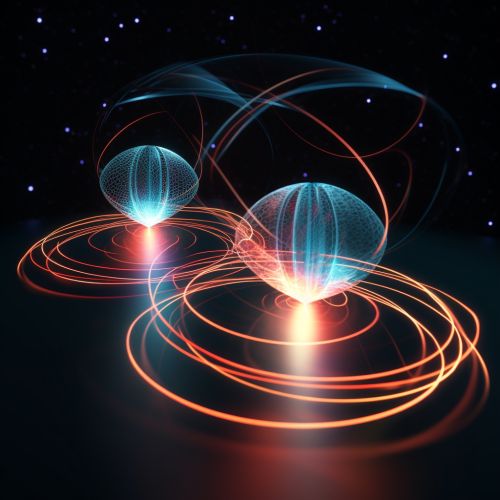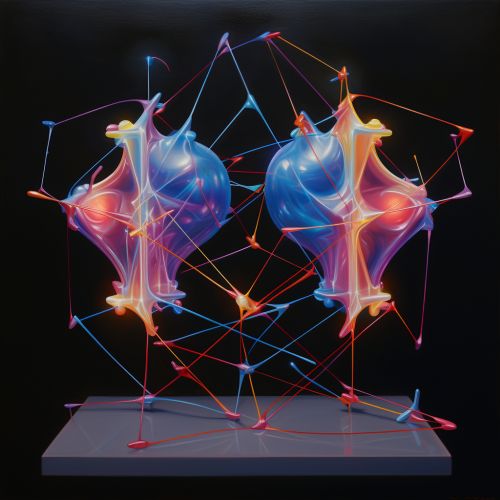Bell state
Introduction
A Bell state is a quantum state of a system of two qubits that represents the simplest (and maximal) form of quantum entanglement. The concept is named after physicist John Stewart Bell. Quantum entanglement is a fundamental principle of quantum mechanics, stating that two or more particles can be inextricably linked, such that the state of one particle is immediately connected to the state of the other, no matter the distance between them.


Description
In the context of quantum information theory, a Bell state, sometimes referred to as a Bell pair, is a specific example of an entangled state. There are four Bell states, which form an orthonormal basis for the two-qubit Hilbert space. These states are of particular importance in the study of quantum information science due to their non-classical correlations.
Mathematical Representation
The four Bell states can be represented mathematically as follows:
- |Φ+⟩ = 1/√2 (|00⟩ + |11⟩)
- |Φ-⟩ = 1/√2 (|00⟩ - |11⟩)
- |Ψ+⟩ = 1/√2 (|01⟩ + |10⟩)
- |Ψ-⟩ = 1/√2 (|01⟩ - |10⟩)
Here, the symbols |00⟩, |01⟩, |10⟩, and |11⟩ represent the basis states of the two-qubit system. The plus and minus signs indicate the phase of the state, and the 1/√2 factor ensures that each Bell state is a unit vector in the Hilbert space.


Properties
Bell states exhibit several unique properties, which are central to many quantum information protocols. These include:
- Superposition: Bell states are superpositions of basis states. This means that they exist in multiple states at once, a fundamental characteristic of quantum systems.
- Entanglement: Bell states are maximally entangled. This means that the state of one qubit is immediately connected to the state of the other, regardless of the distance between them.
- Non-locality: Due to their entanglement, Bell states exhibit non-locality. This means that a measurement on one qubit will instantaneously affect the state of the other qubit, regardless of the distance between them.
- Orthogonality: The four Bell states are mutually orthogonal. This means that they are linearly independent and can form a basis for the two-qubit Hilbert space.


Applications
Bell states play a crucial role in many areas of quantum information science. Some of the key applications include:
- Quantum teleportation: In quantum teleportation, an unknown quantum state is transferred from one location to another, without any physical particle being transmitted. This is achieved by using a pair of entangled qubits in a Bell state.
- Quantum cryptography: Bell states are used in quantum key distribution (QKD) protocols, such as the BB84 protocol. These protocols allow two parties to generate a shared secret key, which can be used for secure communication.
- Quantum computing: Bell states are used in various quantum algorithms and quantum error correction codes. They provide a way to manipulate quantum information in a way that is not possible with classical bits.


